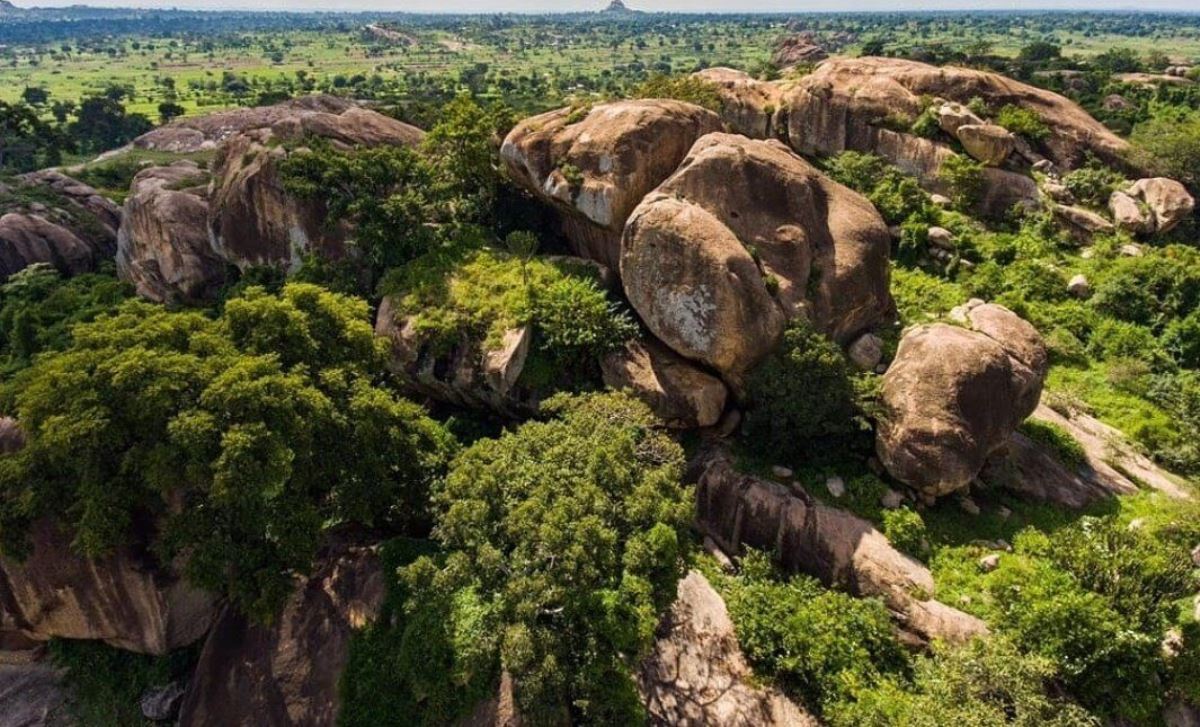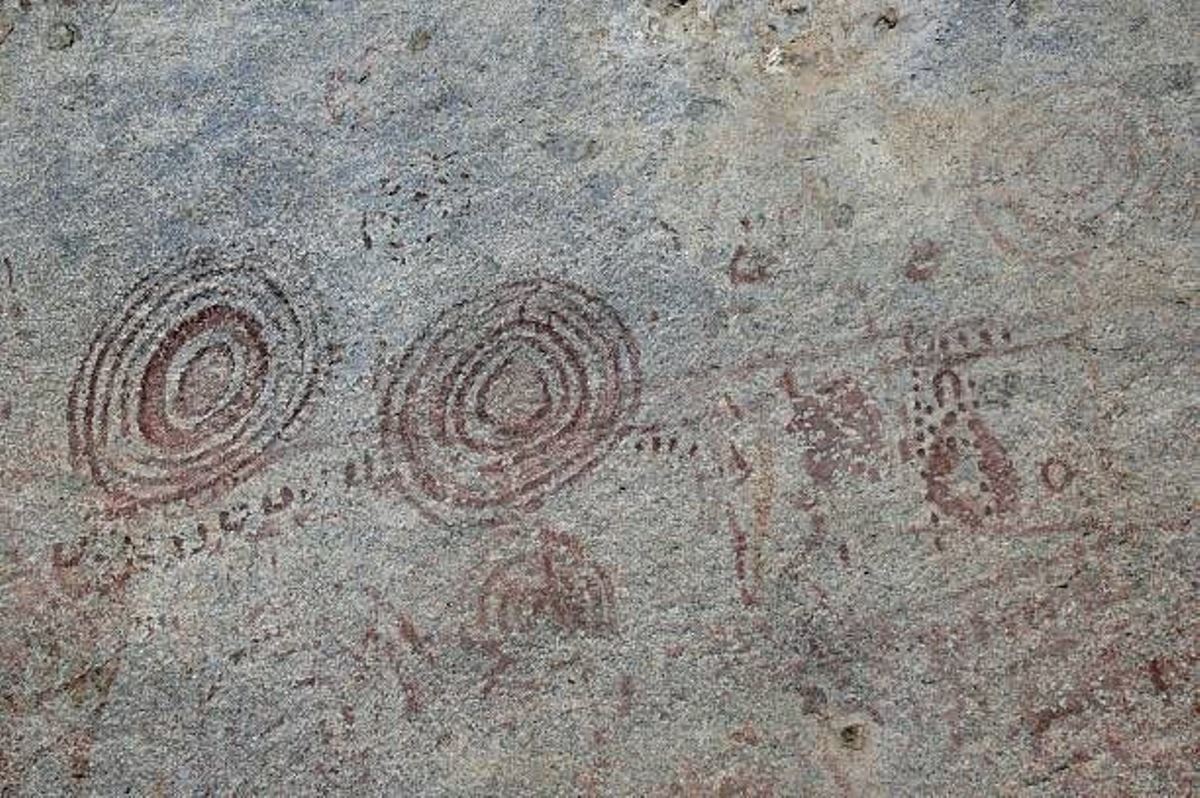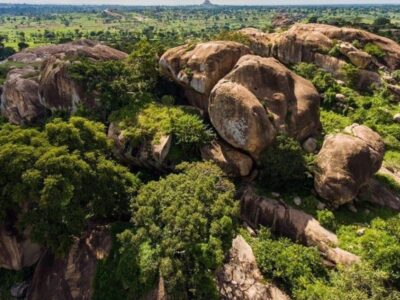Nyero Rock Paintings, Kumi | Uganda Attractions
The Nyero Rock Paintings, one of Uganda’s oldest archaeological treasures, are featured on the 1000 Ugandan shilling note! Found in Kumi District, these ancient artworks are estimated to be between 3,000 and 12,000 years old.
Nyero Rock Paintings consist of six panels of prehistoric art, with geometric and abstract patterns painted in red and black pigment on massive granite rock shelters.
The specific rock art seen on the banknote; Nyero Rock Painting 3 is a stunning reminder of Uganda’s deep-rooted heritage.
Location of Nyero Rock Paintings, Uganda
The Nyero Rock Paintings are located in Kumi District, in eastern Uganda, about 8 km west of Kumi town and approximately 250 km from Kampala. These ancient rock paintings are among the most significant rock art sites in Uganda, believed to date back to before 1250 CE.
The site consists of six rock shelters (Nyero 1–6), with intricate geometric designs painted in red and white pigments. The artwork is attributed to the Batwa (Twa) hunter-gatherers, who once inhabited the region before migrating due to the arrival of Nilotic and Bantu groups.
History of Nyero Rock Paintings, Uganda
The Nyero Rock Paintings, located in Kumi District, eastern Uganda, are among the most significant rock art sites in East Africa. These paintings, believed to date back to before 1250 CE, provide a fascinating glimpse into the lives and traditions of ancient hunter-gatherer communities.
Origins and Cultural Significance
The Nyero Rock Paintings are attributed to the Batwa (Twa) hunter-gatherers, an indigenous group that once inhabited vast regions of East and Central Africa. The Batwa are considered the original inhabitants of the area, but they gradually moved away due to the arrival of Nilotic and Bantu groups.
The artwork at Nyero is part of a homogeneous rock art tradition found across East, Central, and Southern Africa. The paintings are predominantly geometric in nature, often depicted in red pigment, a characteristic of Late Stone Age hunter-gatherer art.
Discovery and Documentation
The Nyero Rock Paintings were first documented in 1913 and later studied by researchers who described them as largely geometric in design. Over time, scholars have debated their origins, with some initially attributing them to the San (Bushmen) of Southern Africa. However, archaeological and ethnographic evidence now strongly links them to the Batwa people.
The Six Rock Shelters
The Nyero Rock Art site consists of six rock shelters, each with unique paintings and historical significance:
Nyero 1: Features white concentric circles and paintings resembling acacia pods.
Nyero 2: The main shelter, protected by a massive boulder. It contains over forty different drawings, including concentric circles and canoe-like designs.
Nyero 3: A smaller shelter with red geometric patterns, located about eight minutes’ walk from Nyero 2.
Nyero 4, 5, and 6: Less studied but still significant, with faded paintings and signs of ancient habitation.
Spiritual and Cultural Importance
Local communities have long regarded Nyero as a sacred site. In the past, people would place money and offerings in small cavities within the rocks, believing that ancestral spirits could grant them blessings.
Preservation and UNESCO Recognition
Nyero Rock Paintings are currently on Uganda’s Tentative List for UNESCO World Heritage Sites, highlighting their global significance. However, exposure to the elements has led to erosion and fading, prompting conservation efforts to protect this invaluable heritage.
The Nyero Rock Paintings remain a testament to Uganda’s rich prehistoric past, offering insights into the artistic and spiritual traditions of ancient communities.







